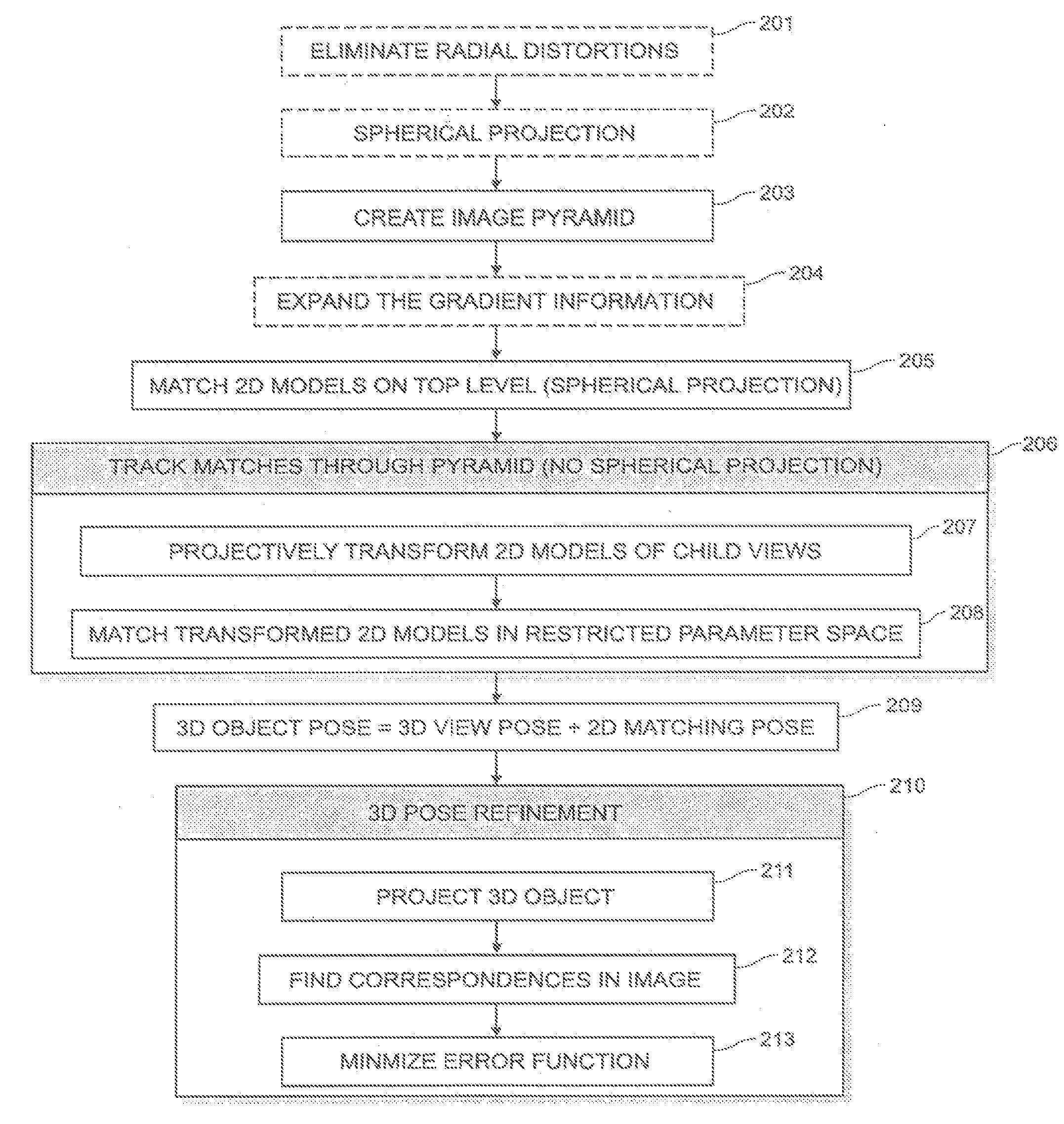System and method for 3D object recognition
- Summary
- Abstract
- Description
- Claims
- Application Information
AI Technical Summary
Benefits of technology
Problems solved by technology
Method used
Image
Examples
Embodiment Construction
[0058]In the following, the single steps of the present invention are described in detail. First, the geometric camera calibration that is the initial step to obtain a high accuracy. After that, some information is given of how the 3D object should be represented. In the next section, the generation of the 3D model that can be used to find the 3D object in a search image is explained. The 3D model generation will be denoted as offline-phase in the remainder of the description. Then, methods are described that can be used to recognize the object in an image. This step will be denoted as online-phase in the remainder of the description. The described steps of the offline-phase are summarized in the flow chart of FIG. 1, the described steps of the online-phase are summarized in the flow chart of FIG. 2. In both flow charts, essential steps are indicated by a solid box, whereas optional steps are indicated by a dashed box. Finally, a robot vision system is introduced that makes use of t...
PUM
 Login to View More
Login to View More Abstract
Description
Claims
Application Information
 Login to View More
Login to View More - R&D
- Intellectual Property
- Life Sciences
- Materials
- Tech Scout
- Unparalleled Data Quality
- Higher Quality Content
- 60% Fewer Hallucinations
Browse by: Latest US Patents, China's latest patents, Technical Efficacy Thesaurus, Application Domain, Technology Topic, Popular Technical Reports.
© 2025 PatSnap. All rights reserved.Legal|Privacy policy|Modern Slavery Act Transparency Statement|Sitemap|About US| Contact US: help@patsnap.com



